|
Fernando Alonso's quest to secure motor racing's Triple Crown (Monaco, Le Mans and the Indy 500) continues. At the weekend he completed World Endurance Championship's end-of-season test with Toyota, a likely precursor to competing in the Le Mans 24 Hours next year. With the Spaniard edging closer and closer to a drive in the historic endurance race, ESPN looks at ten drivers who excelled outside of Formula One. Graham Hill Hill is currently the only man to have achieved the triple Alonso so desperately craves -- victory at the Indianapolis 500, Le Mans 24 Hours and Monaco Grand Prix. His career spanned 18 years with two world championships in Formula One (1962 and 1968) and victory at Le Mans in 1970 on his tenth appearance at the 24-hour race. His Indy 500 victory came in 1966 on his debut when he inherited the victory with just ten laps to go after fellow 'rookie' Jackie Stewart retired. During his earlier career he also took part in the British Touring Car Championship, finishing third in 1963 despite balancing it alongside his defence of the F1 world championship, not to mention an attempt at the Le Mans 24 Hours in a gas-turbine powered car. Stirling Moss It's almost easier to name the cars Moss didn't drive during his career than the cars he did, and remarkably he was successful in most of them. He may not have won a world championship in F1, but his talent was never in question and with 16 wins in five different makes of cars in F1 alone he was always able to adapt to the four wheels around him. Perhaps his greatest achievement was victory at the 1955 Mille Miglia at an average speed of 97.96mph over 992 miles on closed Italian roads. He was hugely successful in GT cars but would try his hand at anything, from the Alpine Rally in a Sunbeam-Talbot to a successful land-speed record attempt at Bonneville in a 1500cc MG. His life-threatening accident at Goodwood in 1962 put an end to his career, but by that point he had a 40% win record across all disciplines (not including his successful hill-climb results in his father's BMW 328 at the start of his career). He made a brief comeback in the British Touring Car Championship for Audi in 1980 but described it as "a big mistake" and instead settled into a more gentlemanly pursuit of racing historics. Jim Clark Arguably one of the greatest Formula One drivers in the history of the sport, Clark did not restrict his talent solely to grand prix racing. He made four appearances at Le Mans in various classes in his early career but it was in F1 and in the United States where he really made his name. With Lotus he won two world championships and became the first Briton to win the Indianapolis 500 in 1965 after skipping that year's Monaco Grand Prix to take part. He also drove a Lotus Cortina to overall victory in the 1964 British Touring Car Championship and later took his trusty Cortina rallying at the 1966 RAC Rally. He also dabbled in NASCAR in 1967 but lost his life in a Formula 2 race at Hockenheim in 1968. His death shocked the motorsport world and highlighted the dangers of racing in any category, no matter how talented the driver. John Surtees Surtees is the only man to win the world championship on both two wheels and four. The son of a three-time British sidecar champion, he was always destined to race bikes and he won his first race when he was 17. By the time he was 26 he had won seven world championships with the famous Italian MV Agusta team. In 1959 -- before he had won his final title -- his universal appeal had earned him a few tests in cars, and he was entered into a race at Goodwood in an F3 Cooper by Ken Tyrrell. Surtees impressed, and in 1960 made the switch to racing cars full time. In just his second championship race he scored a podium driving for Lotus and his first win came in 1963 when he joined Ferrari. A year later he was world champion with Ferrari but his exploits on four wheels were not just limited to F1 and he finished on the podium at the Le Mans 24 Hours in the same year. In 1965 he suffered life-threatening injuries testing a CanAm car in Canada, but returned to the track in 1966 to win again for Ferrari before he left on bad terms. He took part in one race in the USAC National Championship in 1967 but his focus was on Formula One and he went on to found his own race team in 1970. Mike Hailwood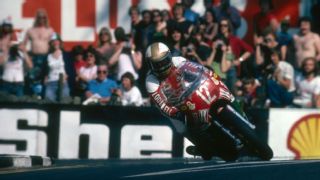 Mike Hailwood was considered among the all-time greats of motorbike racing, winning nine world championships at 250cc, 350cc and 500cc in a seven-year period between 1961 and 1967. His reputation was further enhanced by his success at the legendary Isle of Man TT, where he won 12 times, including three wins in 1961 alone. In 1968 his team, Honda, withdrew from racing but, fully expecting to return, paid Hailwood a £50,000 retainer not to ride for anyone else. Rather than sit on the sidelines, he turned his attention to car racing. He had dabbled with F1 in the mid-1960s with limited success, but while not coming close to repeating his record on bikes, he became a respected driver. In his first attempt at Le Mans in 1963 he finished third driving a Ford GT40 with David Hobbs. Podiums followed in Formula One and in 1972 he also added the F2 championship to his list of honours. Mario Andretti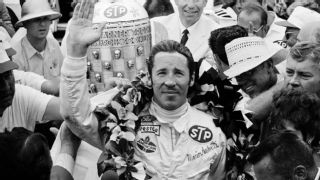 Andretti enjoyed considerable success on both sides of the Atlantic in a career that spanned over three decades. After immigrating to the USA from Italy as a teenager, he started his career on dirt ovals and worked his way up the ranks to IndyCars. He finished third on his Indy 500 debut in 1965 and won it in 1969. By this stage he had already competed in two Le Mans 24 Hours and won the Sebring 12 Hours. In the late 1960s and early 1970s he continued to commute across the Atlantic as he gained a foothold in Formula One. His first F1 victory came in 1971 with Ferrari but it was not until 1978 that he finally became world champion with Lotus. His last F1 races were in 1982 with Ferrari, but he raced on in Champ Car until 1994. His best result at Le Mans came with a second place in 1995, but he made three further appearances in 1996, 1997 and 2000. Nigel Mansell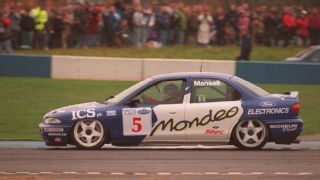 His early career was dedicated to rising up the ranks in Formula One, but after becoming world champion in 1992 he started to diversify. In 1993 he went stateside and won the Champ Car championship at his first attempt, with a third place finish at the Indy 500. He struggled to defend his title in 1994 and returned to F1 for four races, taking his 31st and final victory at the season-ending Australian Grand Prix. A full return to F1 with McLaren in 1995 beckoned, but he couldn't fit in the cockpit early in the season and after two unsuccessful outings at Imola and Barcelona retired from F1 for good. Rather than turn his back on the sport completely, he drove in the British Touring Car Championship in 1998 and in the late 2000s drove GT cars. In 2010 he embarked on the Le Mans 24 Hours with his sons Leo and Greg but crashed after suffering a puncture just 17 minutes in. Dan Gurney He started out racing a Triumph TR2 in the USA, but as the cars became more exotic and Gurney more successful, he earned an invitation to race in Europe for Ferrari in 1958. So began a long Formula One career, which he kicked off with second place behind team-mate Tony Brooks at the German Grand Prix. He moved to BRM for 1960 and then on to Porsche for 1961. During this period he continued to commute across the Atlantic and regularly took part in NASCAR events and the Indy 500, boosting his popularity at home. He was also a Le Mans 24 Hours stalwart, taking part in 10 consecutive races from 1958 to 1967, when he finally won it. He won four races in F1 and his popularity grew so much back in his homeland that Car and Driver magazine promoted the idea of him running for President of the USA in 1964. Unfortunately, he was too young to stand. Jacky Ickx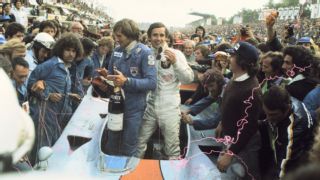 Although he never won a Formula One world championship, Ickx is arguably one of the greatest all-rounders of all time. He finished runner-up in F1 twice, won the Le Mans 24 Hours six times, won a CanAm championship, took victory on his debut at the Bathurst 1000 and won the gruelling Rally Paris-Dakar. In total he took eight victories in F1 and came closest to a title in 1970 when he finished five points adrift of posthumous champion Jochen Rindt - a title he later admitted he would not have wanted given the circumstances. His six wins at Le Mans spanned three decades, with victories in 1969, 1975, 1976, 1977, 1981 and 1982 - the last four coming with Porsche. His win at the Paris Dakar came behind the wheel of a Mercedes G-Wagen in 1983 and he then persuaded Porsche to compete in the North African rally with a Porsche 959 built up to Group B specification. He remains one of the all-time legends of motorsport and in 1991 consulted Mazda to victory at the Le Mans 24 Hours. Jacques Villeneuve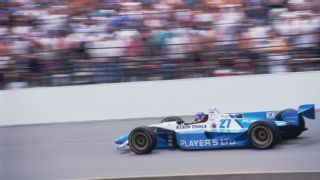 Villeneuve was already a Champ Car champion and Indy 500 winner when he arrived in Formula One in 1996. In his second year at Williams he added an F1 championship to his achievements, but it proved to be the high point of his career. Midway through 2006 he was out of a drive in F1, but still had the desire to go racing and took up the opportunity to try his hand at NASCAR. He also signed up to Peugeot's Le Mans project and finished second at the 24 hour race in 2008. He then took part in various other forms of motor sport, including the Speedcar Series, the Spa-Francorchamps 24 Hours and a series of NASCAR events. Although he never reached the peak of his earlier career, his desire and ability to go racing in various forms of cars makes him stand out among F1 drivers from the modern era.
|
